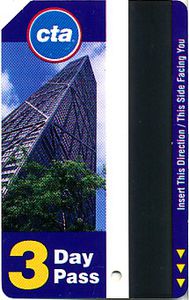Happening Now
Outside-the-Box Partnerships Can Be Win-Wins for Transit Agencies
June 14, 2012
Written By Malcolm Kenton

Not often do public transit agencies take big, outside-the-box moves to raise revenue, attract new riders, and build public goodwill. Agencies too often act like staid bureaucracies unwilling to go out on a limb and try something new. That's why I was pleased to hear of a deal that the Chicago Transit Authority (CTA)announced yesterday that it had made with Groupon, an innovative national company that offers its members the chance to buy deeply-discounted coupons to restaurants, shows, sporting events, attractions and other services.
Groupon works by paying restaurants, theaters, etc. a large one-time sum to buy a certain amount of tickets, passes, food, or other items at wholesale price, then selling coupons to its members for much less than the item's retail price, but at enough of a mark-up over the wholesale price to generate a profit for Groupon over time.
The CTA sold a total of 250,000 3-day passes (good for unlimited rail and bus rides) to Groupon, which paid $7.53 per pass, netting the CTA a revenue infusion of $1.89 million. While CTA normally sells 3-day passes to riders for $14, Groupon members will be able to buy passes for $9 each. Groupon will market these passes to its Chicago-area members in a way designed to attract first-time or infrequent riders to use transit instead of driving or taxis. It's a double win for CTA, which gets immediate, additional revenue and new customers, and it generates profit for Groupon. CTA is the first US transit agency to sell fare media through an online discount network.
It would be great to see more transit agencies, and even Amtrak, enter into partnerships with bulk-purchasing outfits like Groupon, Living Social and others. Success at attracting new riders through deal sites could motivate agencies to try other outside-the-box partnerships with various companies and organizations that would help both partners' bottom lines while also advancing the many side benefits that good transit provides to the cities and regions it serves.
"The Rail Passenger Association's recognition of the essential work done by SMART-TD members aboard Amtrak during this difficult period is appreciated. The Golden Spike Award serves as a testament to the compassion and dedication our conductors, assistant conductors and other workers exhibit constantly through times both ordinary and extraordinary."
Jeremy Ferguson, SMART-TD President
December 21, 2021, on the Association awarding its 2021 Golden Spike Award to the Frontline Amtrak Employees.
Comments